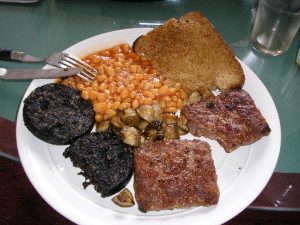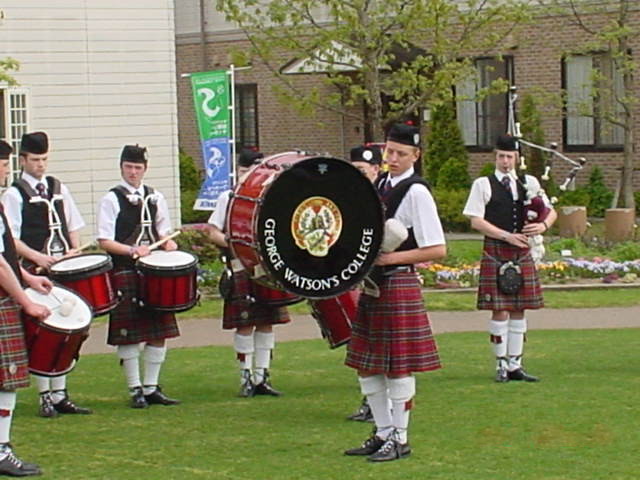Taste Traditional Foods
The Scottish cuisine has its distinctive attributes and recipes, but also shares some with British and European dishes. The chefs use mainly hunting meat, fish, dairy products and vegetables, with salt and pepper.The temperate climate of Scotland provide a generous offer of indigenous game species, that fed its inhabitants for centuries. The coast side, rich in seafood, offers a healthy alternative to the hunted meat diet. Agriculture developed slowly and it was mainly based on oats.
In medieval times, Scotland was a feudal state that put restrictions on what its inhabitants could hunt. The larger part of the population was allowed to hunt down venison, boar, songbirds and various fowl species. The meat, from savage or domesticated species was a rare meal. This reflects on the average meal, made of herbs and roots. Potatoes were introduces late in the British Isles. Before Sir Walter Raleigh brought up the new source of carbohydrates, the population ate mainly oats or barley, because wheat was difficult to grow in the damp conditions.
a feudal state that put restrictions on what its inhabitants could hunt. The larger part of the population was allowed to hunt down venison, boar, songbirds and various fowl species. The meat, from savage or domesticated species was a rare meal. This reflects on the average meal, made of herbs and roots. Potatoes were introduces late in the British Isles. Before Sir Walter Raleigh brought up the new source of carbohydrates, the population ate mainly oats or barley, because wheat was difficult to grow in the damp conditions.
Haggis, the national dish of Scottish people originated from the custom of transporting low quality meat or offal in a bag made from a pig or a sheep’s stomach. These ingredients are boiled and mixed with onion, oatmeal, suet, stock, salt and pepper and boiled for several hours inside of a sheep or pig’s stomach.
The porridge has a similar story: people were carrying a small bag of oatmeal that could be transformed anytime into a basic porridge, using an instrument called griddle. This mixture was added to boiling water and stirred constantly until cooked. When finished, the Scottish ancestors would cut it into slices and take it away to eat later in the day. Nowadays, it is served on the spot, with creamy milk or salt on top.
Preserving meat with the smoking or salting methods has become popular in this area after the Vikings arrived. Smoked fish or meat are a delicacy in the Scottish cuisine.


